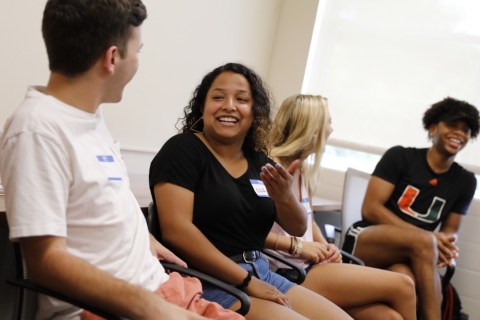What?
The University’s Learning Through Dialogue and Discussion program seeks to promote discussion-based teaching and learning across the undergraduate curriculum by increasing the visibility of this pedagogy around campus, providing support to participating faculty, and reshaping learning spaces. The ultimate goal is to increase the proportion of undergraduate students who experience the power and effectiveness of discussion-based pedagogy.
Why?
Students are the protagonists in discussion-based pedagogies. As they discuss content, they reflect, question, comment, cite, doubt, agree, and disagree and, in doing so, experience and learn to navigate the complex and often uncertain process of learning and discovery. This promotes knowledge construction, higher-order thinking, and collaborative learning and, on a more general level, prepares students for life as researchers and innovators where the ability to navigate complex ideas with the right questions is key.
How?
The University has identified three teaching methods, each with slightly different characteristics, but all creating the conditions for more discussion and dialogue in the classroom:
- The Harkness Method
- Flipped Learning
- Problem-based Learning
Each year, a group of faculty will be trained in one of these methods and will subsequently redesign one of their courses to integrate elements of their chosen method.





